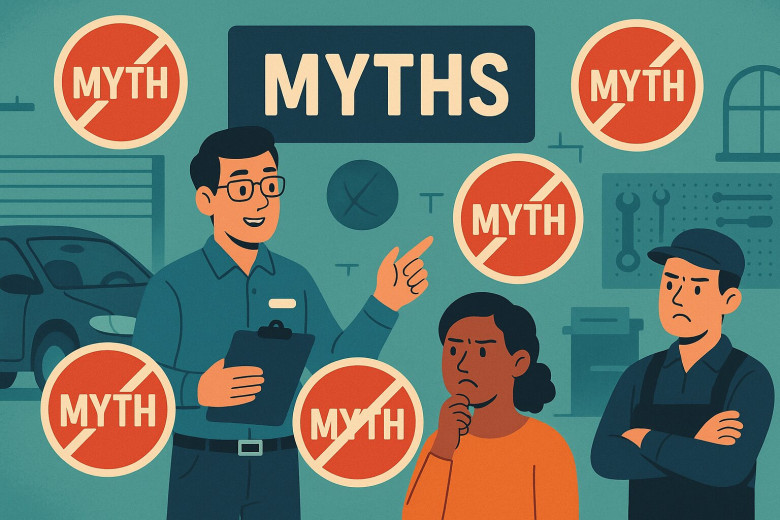views
Debunking 4 Myths About Service Advisors in the Automotive Industry

The automotive service advisor plays a vital role in connecting customers with the technical team responsible for maintaining and repairing their vehicles. Yet despite this important position, several misconceptions still surround what service advisors do—and don’t do. Let’s clear up four common myths that misrepresent this crucial job.
Myth #1: A Service Advisor Should Inflate Tires to the PSI Shown on Sidewalls
This is not just a myth—it’s a safety concern. The PSI rating found on the sidewall of a tire indicates the maximum pressure the tire can handle, not the recommended amount for driving. Over-inflating tires to this level can lead to poor handling, uneven wear, and even blowouts. Professional service advisors know to check the correct tire pressure for a vehicle on the sticker found in the driver-side doorjamb, glove box, or fuel-filler door. Following the manufacturer's recommended PSI ensures safety, comfort, and optimal performance.
Myth #2: You Can Tell If A Customer Will Buy A Service When You Meet Them
Pre-assessing customers is a certain path to failure. Failure for the shop, the advisor, and yes, even the customer. Service recommendations are made due to things customers need to keep their vehicle in top mechanical condition. So, if a service advisor chooses to not make a recommendation due to a presumption that they will not authorize the service, they could set that customer up for trouble in the long run. A solid service advisor knows not to judge a book by its cover and to offer up those important service recommendations to every customer who needs them. If nothing else, the customer is at least informed, and that’s a huge part of the service advisor role.
Myth #3: Service Advisors Are Just Salespeople
Although sales are part of the job, reducing service advisors to mere sales reps overlooks the complexity of their role. They’re customer advocates, communicators, problem-solvers, and coordinators. From de-escalating tense situations to translating technical diagnoses into understandable language, their work requires emotional intelligence, technical knowledge, and strong organizational skills. A good advisor builds trust—not just bills.
Myth #4: Technicians Can Easily Replace Service Advisors
In small shops, technicians may double as advisors, but in high-volume facilities, expecting technicians to manage customer service, paperwork, and communication alongside their technical tasks is unrealistic. Service advisors are essential in large operations to ensure the service workflow runs smoothly and customers stay informed. Both roles are extremely valuable and are at peak performance when they work better together.
Want to become a more effective service advisor?
Chris Craig’s book, Becoming a Better Service Professional, is a hands-on guide to mastering customer service, time management, teamwork, and more. Whether you're new or experienced, it's a valuable tool to level up your skills and confidence in the role. Coming soon on Amazon.






















Comments
0 comment